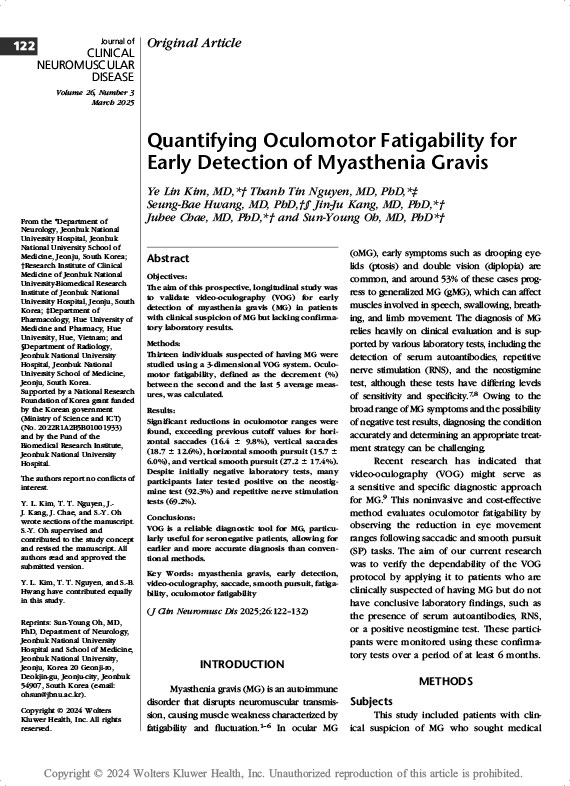Quantifying Oculomotor Fatigability for Early Detection of Myasthenia Gravis
Mar-25
Abstract
Objectives:
The aim of this prospective, longitudinal study was to validate video-oculography (VOG) for early detection of myasthenia gravis (MG) in patients with clinical suspicion of MG but lacking confirmatory laboratory results.
Methods:
Thirteen individuals suspected of having MG were studied using a 3-dimensional VOG system. Oculomotor fatigability, defined as the decrement (%) between the second and the last 5 average measures, was calculated.
Results:
Significant reductions in oculomotor ranges were found, exceeding previous cutoff values for horizontal saccades (16.4 ± 9.8%), vertical saccades (18.7 ± 12.6%), horizontal smooth pursuit (15.7 ± 6.0%), and vertical smooth pursuit (27.2 ± 17.4%). Despite initially negative laboratory tests, many participants later tested positive on the neostigmine test (92.3%) and repetitive nerve stimulation tests (69.2%).
Conclusions:
VOG is a reliable diagnostic tool for MG, particularly useful for seronegative patients, allowing for earlier and more accurate diagnosis than conventional methods.

